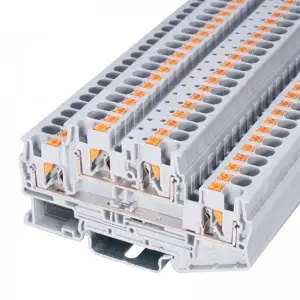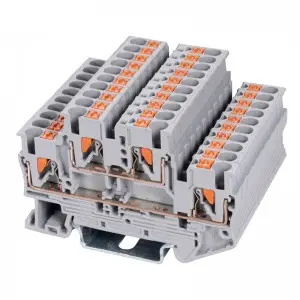Wire connectors, also known as wire terminals, are essential components for electrical connections. These connectors are used to ground wires, connect wires to equipment, or connect multiple wires together. They come in various types, sizes and materials. In this article, we'll discuss the different types of connectors and how to choose and use them. Types of Wire Connectors There are many types of wire connectors, but the most common types are spin-on, crimp, and solder. Screw-in connectors, also known as wire nuts, are the most commonly used type of connector.
They are made of plastic and have a threaded end that screws onto the wire for a secure connection. Crimp connectors are made of metal and require special crimping tools to attach the connector to the wire. They are commonly used in automotive and industrial applications. Soldering connectors requires a soldering tool to fuse the wire and connector together. They are best suited for high temperature environments or applications that require a strong connection, such as aerospace or military applications. How to choose the right wire connector Choosing the right wire connector depends on several factors, such as wire size, application, and environmental factors. For thinner wires, twist-on connectors are suitable, but for larger wires, crimp connectors should be used. For automotive applications, crimp connectors are highly recommended as they can withstand vibration and heat. For high temperature environments, soldered connectors are best.
For applications where moisture or chemicals may be present, connectors made of stainless steel or other corrosion-resistant materials should be used. How to use the connector Before using a wire connector, the insulation on the wire should be stripped so that the exposed wire can be seen. The wire should be inserted into the connector and tightened to a snug fit. For twist-on connectors, the wires should be twisted together before the connector is screwed onto the wires. The connector should then be tightened until it cannot be turned any further. For crimp connectors, wires should be placed into the connector and a crimping tool should be used to secure the wires to the connector. For soldered connectors, wires should be inserted into the connector, then a soldering tool is used to fuse the wires and connector together. In summary Wire connectors are critical for electrical connections, and choosing the right connector is critical for a safe and reliable connection. There are various types and materials of connectors, and users should choose appropriate connectors according to wire diameter, usage and environmental factors. Proper use of wire connectors ensures a secure and long-lasting connection, making them essential for any electrical project.


Post time: May-26-2023
